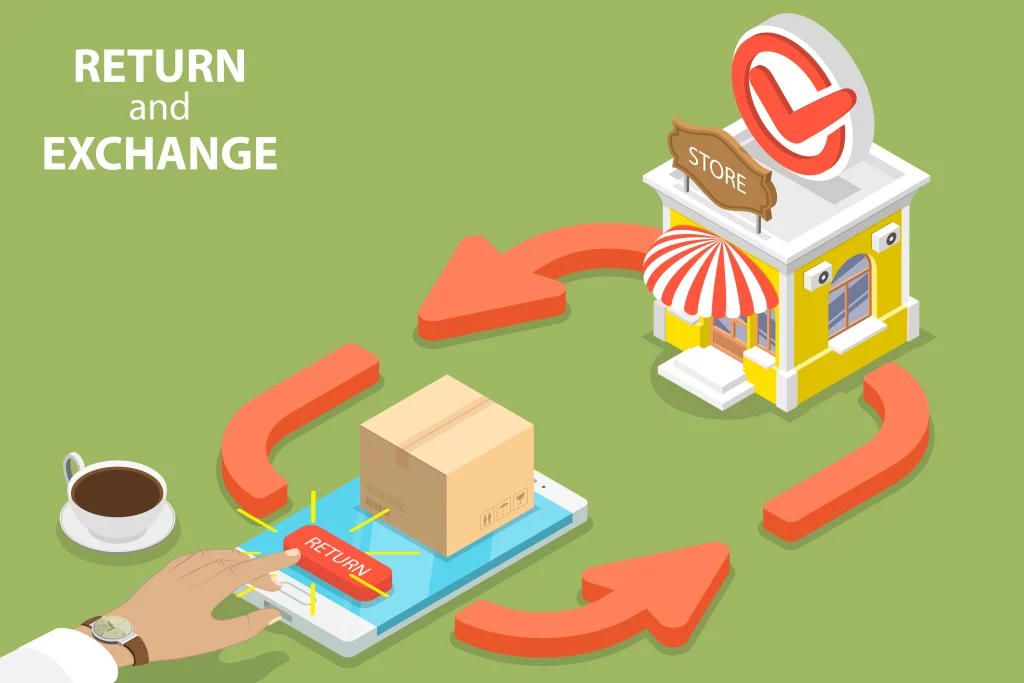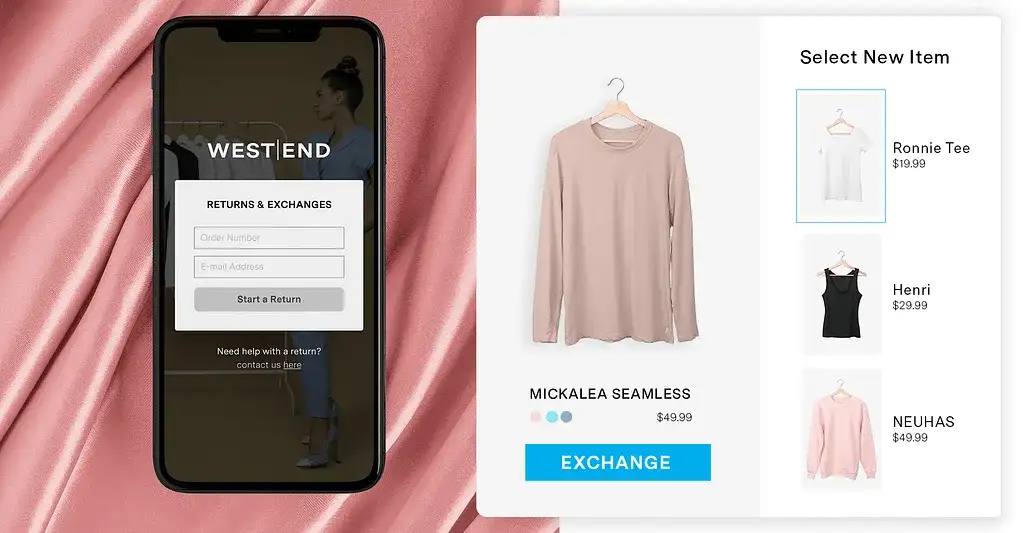The Rise of Exchanges and Returns Optimization in Ecommerce

Returns have taken the ecommerce world by storm.
In 2021, 21% of all online sales turned into returns, $218 billion worth of online goods were returned, and for every $1 billion in sales, merchants lost $166 million to returns.
For retail merchants, returns are not just expensive, they are hard to manage.
Shopper behavior and expectations during and after the pandemic changed. Shoppers want and expect:
- Free returns and exchanges
- Someone to pick up their packages
- To try on multiple products
- Items shipped back ASAP
- Sustainable return practices
- To feel like they’re part of your brand
All these changes in shopper behavior have left merchants scrambling.
How are merchants supposed to manage a business and stay profitable when dealing with the rising tide of returns and shifting consumer expectations?
When initiating a return, consumers are often given return options: refund, store credit, warranty return or exchange. But which option will lead to long-term revenue and customer retention?

Ecommerce Exchanges Are a Short-Term Strategy
For some returns software companies, incentivizing exchanges over refunds is a quick, yet short-sighted win. Incentivizing exchanges can lead to merchants preserving more cash, more upsell opportunities, and shoppers ending up with a product instead of their money back.
It may seem like this tactic to influence shopper behavior is the answer.
Incentivizing shoppers to choose an exchange over a refund or store credit can help a lot of brands scale to new heights. But with the growing number of exchanges, new problems continue to pop up.
- Exchanges don’t make sense for every vertical – they’re most effective in the apparel space
- Shoppers can game the system – they learn they can get discounts
- Making exchanges easier for shoppers doesn’t necessarily mean merchants can process them any quicker or liquidate/re-sell products for profit
- Exchanges don’t cover items covered by a warranty
- Warehouse teams can get left out of the loop
- Merchants have so many tools with no easy way to connect them

Exchanges are a tactic, not a long-term strategy. That’s not to say exchanges aren’t great for revenue, retention, and growth – they are.
Ultimately, exchanges are only a piece of a much larger puzzle. A puzzle that if you can piece it together, could just be the thing that makes or breaks your brand.
Returns Optimization Through Data and Analytics
As an ecommerce brand, the real strategy for growth is knowing where your scalability chokepoints are – and acting accordingly.
Returns Optimization – continuous improvement strategies that use returns data to improve the shopper experience, improve operational efficiency, and grow profits.
Put another way, returns optimization focuses on improving the return process, reducing return rates, streamlining operations, and increasing a customer’s lifetime value.
Put simply: returns data fuels returns optimization.

Returns are natural. Just as sales tell you what is working, returns tell you what is not. Without returns data, merchants will not see the full picture and won’t have the depth of info on their products or shoppers to keep growing.
All you truly know from a return is that the expectation of the product or experience in some way did not match the reality. Your best remedy is to understand why expectations were not met.
The question is, what data matters and what should merchants be measuring to optimize returns? Is it as easy as just checking return rates and comparing them to benchmark studies?
Unfortunately, no. Retailers need to dig deeper through returns data to reveal more.
Does a return rate of 25% tell you the impact returns are having on your bottom line? No – it just tells you where to begin looking. Return rates tell you there is a problem. Return reasons tell you where to look. Return comments tell you what is wrong.
This research only addresses one half of the equation – the product side.
The other half of the equation is the operational side. The next questions that need to be asked are:
- How fast are items moving through different RMA stages?
- How many returns are in each RMA stage?
- What condition are items in when the warehouse team gets them back?
- How do repeat shoppers compare to first time shoppers?
- How do these metrics compare over time?
- How much time and labor are spent on these manual processes?
The fastest way to increase your ecommerce store profit is by optimizing operational efficiency.
Why? Returns cost retailers a substantial amount of money. From each employee’s touchpoint, through a manual process, and from every minute an employee is on the clock to facilitate a return. That does not include the cost of shipping a return, as shoppers expect returns to be dealt with quickly.
The ultimate level of profitability a merchant can achieve is based on data gathered from shoppers, products, and ecommerce returns policies.
Most merchants do not have a returns problem so much as they have a problem measuring the data to improve their ecommerce returns processes.
Great returns data from your products and operations leads to confident decisions, which leads to more sales, less returns, and more profits.
Without leveraging your returns analytics, you are leaking money somewhere and it can be difficult to pinpoint where. This data provides visibility to key insights on how to optimize your business for future growth.


